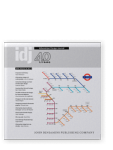Vol. 25:3 (2019) ► pp.294–300
Change is not the only constant
Developments in information technology during the past 40 years have presented new opportunities for information designers and also posed new challenges. Computer controlled displays are now so ubiquitous that most people in everyday life need to interact with information shown on screens. Many of the characteristics of these readers have not changed: they forget things, get distracted, make assumptions, etc. Research has confirmed that designing an interaction style to reduce the demands made on people’s sensory and cognitive processes helps them accomplish tasks more easily. There has undoubtedly been progress, particularly with mobile devices. Graphical user interfaces and touch screens can make interactions feel intuitive, almost conversational, but interface glitches remain. These arise both from the tension inherent in designing for experienced and novice users, and from design decisions often involving people with differing priorities. The features of interfaces will continue to change but the challenge of finding ways to support people’s sensory, cognitive and conative characteristics will continue.
Article outline
- 1.Awareness grew: 1979–89
- 2.Progress and potholes
-
References
